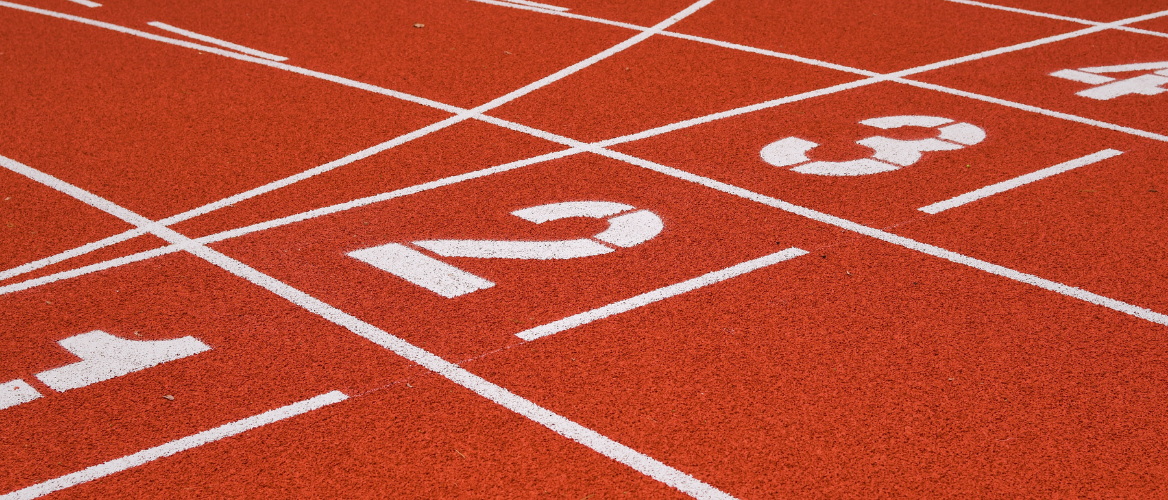May 18, 2021
June 3, 2025
Sports injuries don’t have to happen to the professionals: even an amateur can get injured on their first outing, and what we categorize as common sports injuries can take place off the field or court.
At its most basic, common sports injuries are any sort of malady that can occur in an active person, independent of whether or not that person was practicing a sport at the time of injury. They can be acute, meaning they occurred at the time of practice, such as a sprain or dislocation, or chronic, or long-lasting as a result of overuse.
Spain has specialized doctors in trauma, the department to which most “sports” injuries are directed, whether or not they’re acute. Vademecum reports that the month in which most sports injuries occur is January, a date that coincides with many people beginning fitness routines, with tendinitis and sprains being the most frequently attended injuries. The most common sports injuries happen while practicing football and running.

What are common sports injuries in Spain?
Popular professional sports in Spain include European soccer, basketball, tennis, paddle, synchronized swimming and swimming, and professional stars like Rafa Nadal and Pau Gasol have had highly prolific injuries commonly associated with their sport.
Sports injuries will be different according to the sport or to the part of the body that’s affected, but below is a list of the top common sports injuries, their names and their treatments in Spain (sourced from Medline Plus). Issues with joints and muscles are the most common, and ankles, elbows, shoulders and feet tend to be the body parts with the highest instance of injury.
Sprains
Rolling, twisting or turning a joint in an unnatural way can overstretch and even tear the ligaments, causing a sprain. Sprains are perhaps the most common injury for all athletes, particularly those who pivot or move their extremities often.
Body parts that are commonly sprained are fingers and wrists, ankles and knees, but just about every bone in your body can experience this sort of injury.
In Spain, a sprain is called an esguince, and you can add the body part after. For instance, an ankle sprain is an esguince de tobillo.
Treatment for sprains is simple: rest, wrapping up the affected area with a tight-fighting bandage, ice compressions and avoiding hard physical activity while you’re healing.
Strains and swollen muscles
Like a spain, a strain (tensión muscular in Spanish) is an acute injury that often occurs for overstretching or overusing a muscle, sometimes resulting in tearing part or all of your muscle fibers and tendons. You’d not only feel a pull but may have swelling in the affected area, called an hinchazón or a músculo hinchado. Provoking a strain is likely more common than you think: you can pull a muscle by performing everyday tasks and not just by working out!
You can treat a strain like a sprain by following the RICE plan and taking an anti-inflammatory drug like ibuprofen, but if the pain does not subside in 24 hours, you feel or hear a pop at the time of the accident, or you have a fever, head to the ER.
Achilles Tendon injuries
The Achilles tendon is the largest in your body, and you use it when climbing, walking and even standing on your toes. The injury comes as a stretch or tear in the muscle that connects the calf to the back of the knee and it often a pain or stiffness in the back of the heel; if you hear a pop, you may have partially or completely torn the tendon. In Spanish, the phrase to use is tendón de Aquiles.
Treatment is usually rest and stretching, though overuse can cause tendonitis and may even require surgery.
Rotator cuff injuries
A common injury for baseball and tennis players as well as swimmers and gymnasts, rotator cuffs are the groups of muscles and tendons that hold the upper part of your arm bone in the shoulder socket. Categorized by pain and swelling in your shoulder, this part of your body is often a victim of overuse and tendon degeneration – simple wear and tear.
Thus, they’re common for peons, too – especially if you’re over 40, have a job that requires heavy lifting or reaching overhead or have a fall.
The word in Spanish for rotator cuff is manguito rotador, and an injury, lesión del manguito rotador. If your injury isn’t serious, you can exercise RICE; if your injury is more severe, you may have to undergo physical therapy to strengthen the area or surgery as a last option.
Fractures, breaks and dislocations
A perennial favorite in the game, “never have I ever” and present in childhood taunts and chants, broken bones happen to anyone from falls, accidents, overuse or osteoporosis. You’ll usually feel a sharp pain in addition to swelling, tenderness, bruising and the inability to move the affected area.
Broken bone is a misleading term, as the bone is fractured. Some fractures are clean and thus easier to set and heal.
Here, the normal rest and ice will need additional support to heal properly and allow you to keep practicing sports and other everyday activity when you’re cleared. You must see a doctor to assess the level of injury.
A bone is dislocated when the bone is no longer aligned in the correct place. It can be serious because it affects not only the bones but also the muscles, ligaments, blood vessels and nerves. See a doctor immediately to be sure that the affected area is stabilized and that blood pressure can be restored and any nerve damage assessed.
Children tend to have broken bones and dislocations heal faster, so it is imperative that you listen to the advice of your attending orthopedic doctor. In some cases, rehabilitation and/or surgery might be necessary.
The words you’ll need: hueso (bone), dislocado (dislocated), fractura (fracture).
Lumbar spine injuries
The lumbar spine is the lowest major part of the spinal cord and carries a large part of your body, controlling the hips and legs as well as carrying you upright. For athletes, the lower back receives a great deal of strain in specific sports; other factors like a fall or motor vehicle accident, can affect the lumbar spine.
While spinal injuries can cause series injury or even death, most people begin to experience discomfort in the tissues surrounding the spine. In an age where many Spaniards and residents in Spain have been working from home, back injuries are happening more frequently due to sitting poorly and improper, ergonomic seating.
Treatment, of course, depends on the severity of the injury. The way to say lumbar spine in Spanish is espina lumbar.

What are some risk factors for common sports injuries?
Injuries from practicing an active lifestyle can vary: overtraining, improper technique, poor equipment like shoes, prior injury or changing the level of intensity too quickly. Before you begin practicing a new sport, always consult with a professional that can help you assess your level of physical fitness and develop a training plan.
How to prevent sports injuries
Prevention is also an enormous factor in sports injuries, as staying in good health and attending periodic checkups can help reduce the number of trips to the ER after hitting the gym. This includes:
- Warming up (and cooling down) properly;
- Using proper technique and the correct equipment (so don’t be afraid to ask!);
- Starting slow before gradually increasing activity;
- Paying attention to nutrition, rest and recovery.
What to do if you get injured while practicing sport
The most important thing to do if you get hurt is to stop playing and follow the RICE treatment to alleviate pain and swelling: rest, ice, compression and elevation. You’ll be able to feel sudden, severe pain in nearly all cases, and may experience swelling or bruising, inability to put weight or strain on the injured part of the body or even the inability to move it – particularly in the case of an acute injury.
Should you need further treatment beyond RICE, such as rehabilitation or surgery, speak with your healthcare provider about the correct course of treatment. Sports injuries are often not serious or chronic at the amateur level and should, in no way, deter you from practicing healthy lifestyle habits.
Health insurance and sports injuries
More often than not, a sports injury is accidental and emergent. You may end up in the ER! Having a top-notch health insurance you can rely on for checking out an injury and potentially completing physical therapy or follow-up care is primordial.
The general rules for shopping for health insurance plans ring true here: get a quote by filling in some personal data on Caser’s health insurance quote calculator. Depending on your level of physical activity and even the risk of the sport, you might consider some add-ons. Keep in mind coverage limits, providers in your network and whether or not exclusions exist for the type of sport or activity.
Insuring yourself with Caser is more than a great price with numerous perks- it’s the peace of mind of knowing that your body will get the prevention it needs while protecting you if a sports injury occurs.
My experience with common sports injuries in Spain
Despite my athletic upbringing and year-round participation in competitive gymnastics as a child, my sports injuries remain common – tired joints from walking and biking, muscles aches from lifting weights and the occasional rolled ankle from general klutziness. Perhaps the worst I’ve even been hurt off the floor was tripping up a staircase in the metro – my knee ballooned in size and became too stiff to walk.
I had Caser’s Integral private insurance, so I waddled to the hospital nearest to my house to have a specialist rule out anything more serious than a wounded knee (and, um, my wounded pride). The same when I completed the Camino de Santiago in 2013 with Caser’s support – I not only had a physical and biotech study prior to setting off on my 365 kilometer journey, but get post-hike care for sore knees, shins and lower back.
Having a one-stop shop for diagnosis and rehabilitation meant that I could return to biking and running after several weeks of rest, all with the knowledge that my long-term health goals of staying active and fit were the long game.
|
If you are searching for health insurance in Spain, Caser Expat Insurance has the right policy for you!
|
What can you do in the Centro Médico Caser?
Our most prestigious no copay health insurance is your best option.
A sprain is an injury to a ligament (the tissue that connects bones at a joint), while a strain is an injury to a muscle or tendon (the tissue that connects muscles to bones). Sprains often occur in the ankles, and strains are more common in the back or hamstrings.
You should see a doctor if the pain is severe, if there is significant swelling, bruising, or if you can’t move the joint or put weight on it. Also, if the injury doesn’t improve with rest and basic care after a few days, medical attention is recommended.
It depends on the type and location of the injury. Some mild injuries can heal with light activity, but continuing to train without proper rest can make the injury worse. It’s best to listen to your body and consult a healthcare professional if you're unsure.
Warm up properly before exercising, use the correct technique, wear appropriate gear, stay hydrated, and don’t skip rest days. Gradually increase the intensity of your training, and always listen to your body to avoid overuse injuries.
.png?width=344&height=67&name=logo_caser%20(2).png)









Let Us Know What You Thought about this Post.
Put your Comment Below.